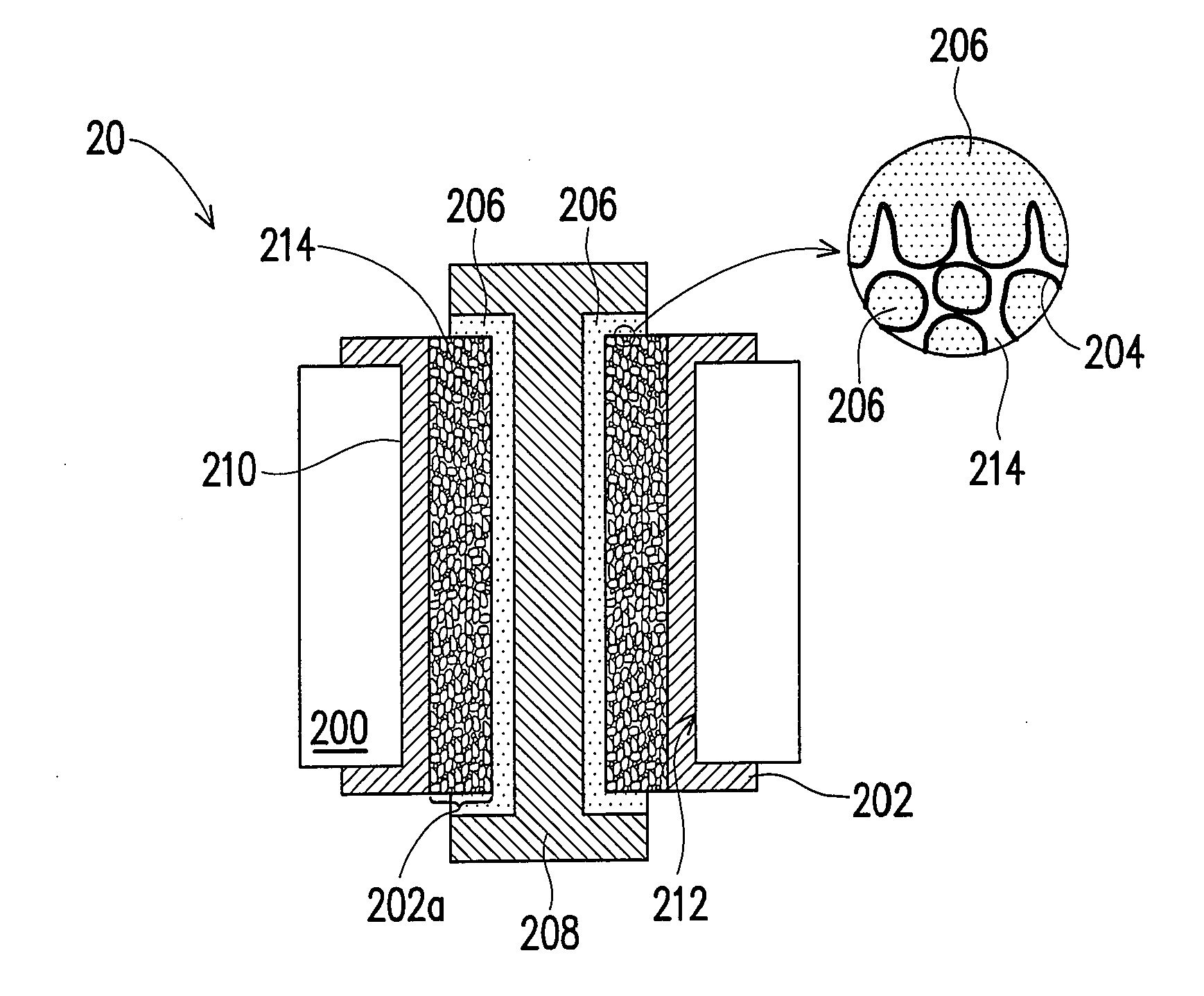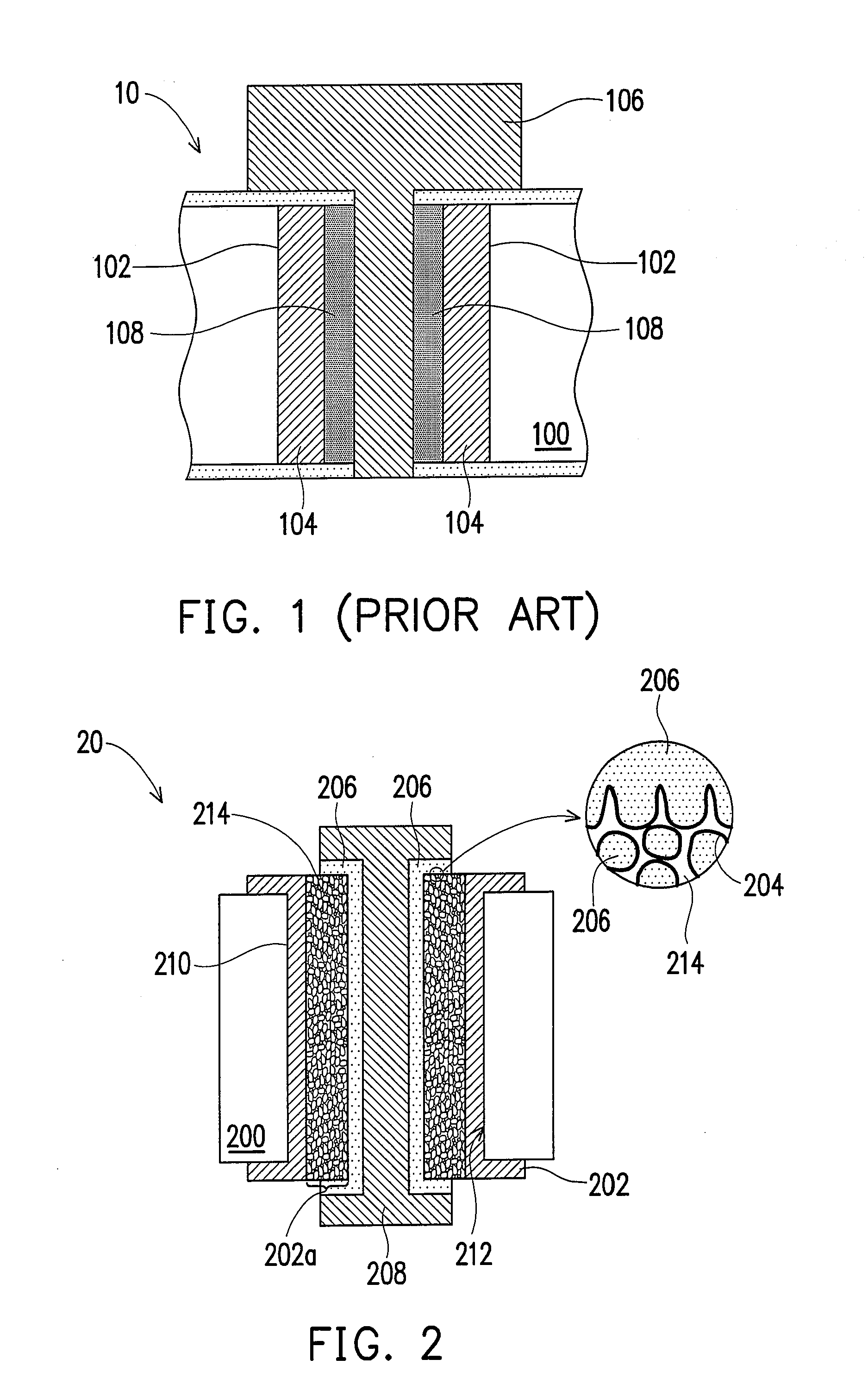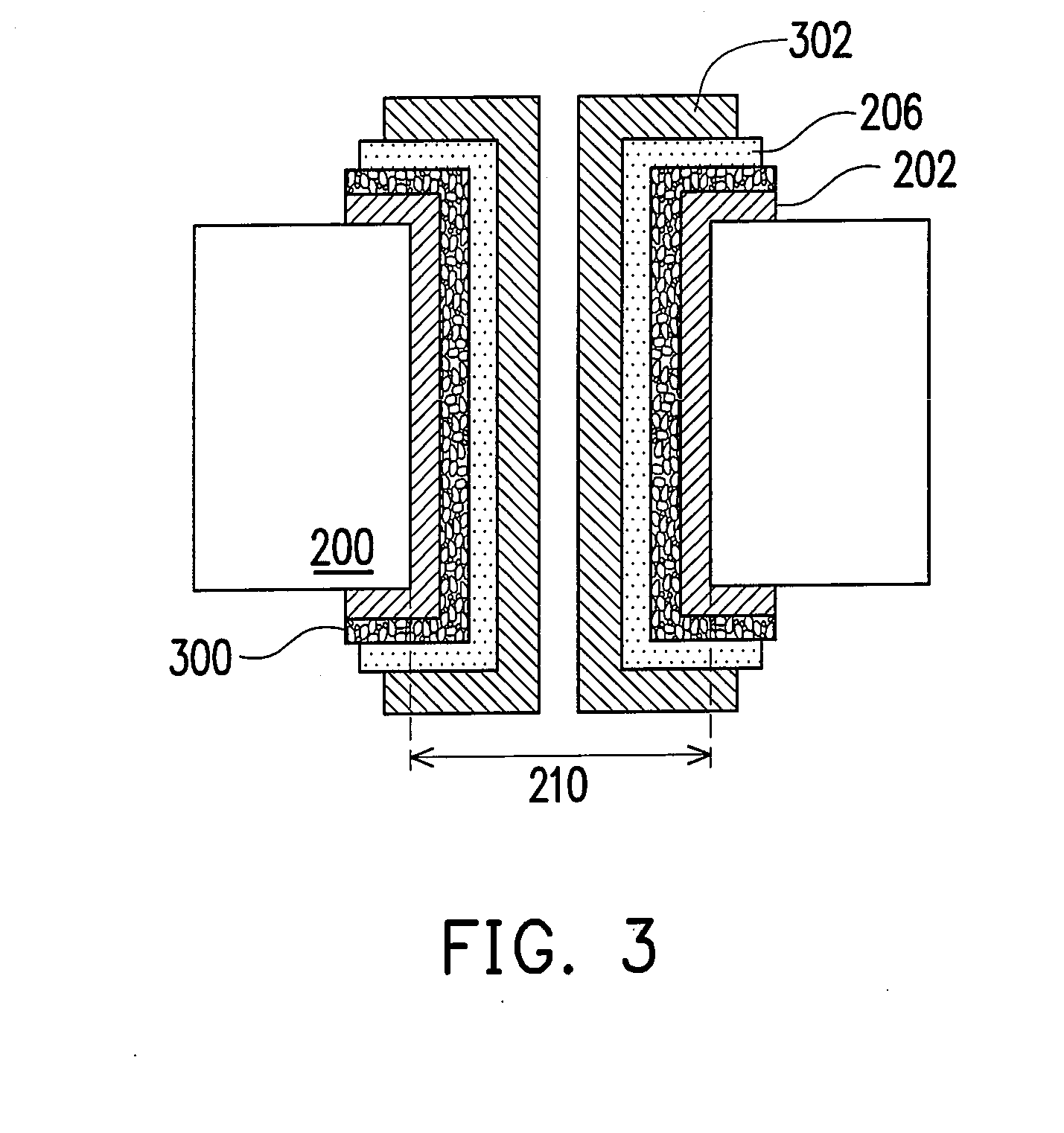Through hole capacitor and method of manufacturing the same
a technology of capacitors and through holes, which is applied in the direction of variable capacitors, feed-through capacitors, printed circuit non-printed electric components association, etc., can solve the problems of increasing the manufacturing cost, and increasing the number of pins for connecting other elements on the outside. , to achieve the effect of improving the voltage stabilizing effect and significantly increasing the capacitor through hol
- Summary
- Abstract
- Description
- Claims
- Application Information
AI Technical Summary
Benefits of technology
Problems solved by technology
Method used
Image
Examples
first embodiment
[0023]FIG. 2 is a schematic cross-sectional view of a through hole capacitor according to the present invention.
[0024]Referring to FIG. 2, a through hole capacitor 20 of the first embodiment includes a substrate 200, an anode layer 202, a dielectric layer 204, a first cathode layer 206, and a second cathode layer 208. The substrate 200 has a through hole 210. In the first embodiment, the substrate 200 is a silicon substrate and can further be an insulating substrate or a metal substrate. Although merely one through hole 210 and one through hole capacitor 20 are shown in FIG. 2, the substrate 200 can further has other through holes, which can be disposed with the through hole capacitors and can further serve as a portion of the circuit wiring. Further, a plurality of through hole capacitors can be connected in parallel to one another completely or partially. The through holes in the substrate can be arranged in an array. Furthermore, the first embodiment is described with a cross sec...
second embodiment
[0029]FIG. 4 is a flow chart of manufacturing processes of a through hole capacitor according to the present invention.
[0030]Referring to FIG. 4, in Step 400, a plurality of through holes is formed in a substrate. The substrate is, for example, a silicon substrate, an insulating substrate, or a metal substrate.
[0031]In Step 402, an anode layer is formed on an inner surface of at least one through hole. A material of the anode layer is, for example, aluminum, tantalum, niobium, or niobium monoxide.
[0032]Next, in Step 404, a surface treatment is performed on the anode layer to make a surface of the anode layer be a porous structure. The surface treatment is, for example, an etching process or another process capable of roughening the surface of the anode layer. For example, when the material of the anode layer is aluminum, etching can be performed by using hydrochloric acid, sulfuric acid, phosphoric acid, or a mixture thereof.
[0033]In Step 406, a dielectric layer is formed on the por...
PUM
| Property | Measurement | Unit |
|---|---|---|
| structure | aaaaa | aaaaa |
| conductivity | aaaaa | aaaaa |
| conductive | aaaaa | aaaaa |
Abstract
Description
Claims
Application Information
 Login to View More
Login to View More - R&D
- Intellectual Property
- Life Sciences
- Materials
- Tech Scout
- Unparalleled Data Quality
- Higher Quality Content
- 60% Fewer Hallucinations
Browse by: Latest US Patents, China's latest patents, Technical Efficacy Thesaurus, Application Domain, Technology Topic, Popular Technical Reports.
© 2025 PatSnap. All rights reserved.Legal|Privacy policy|Modern Slavery Act Transparency Statement|Sitemap|About US| Contact US: help@patsnap.com



